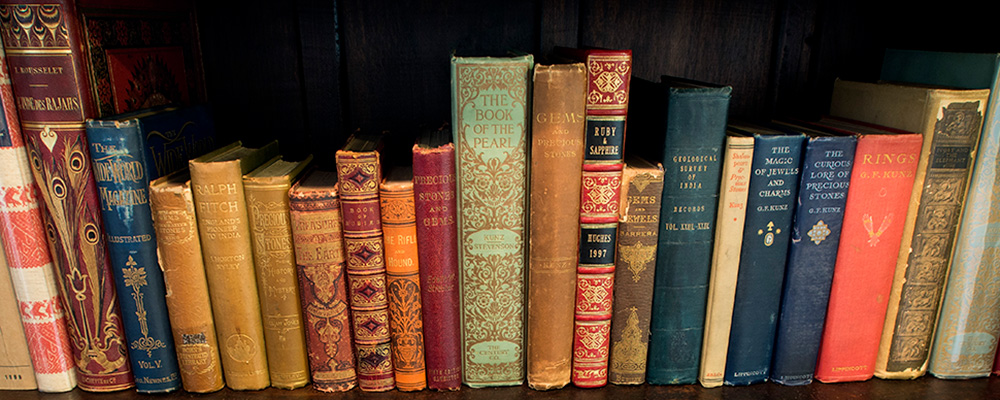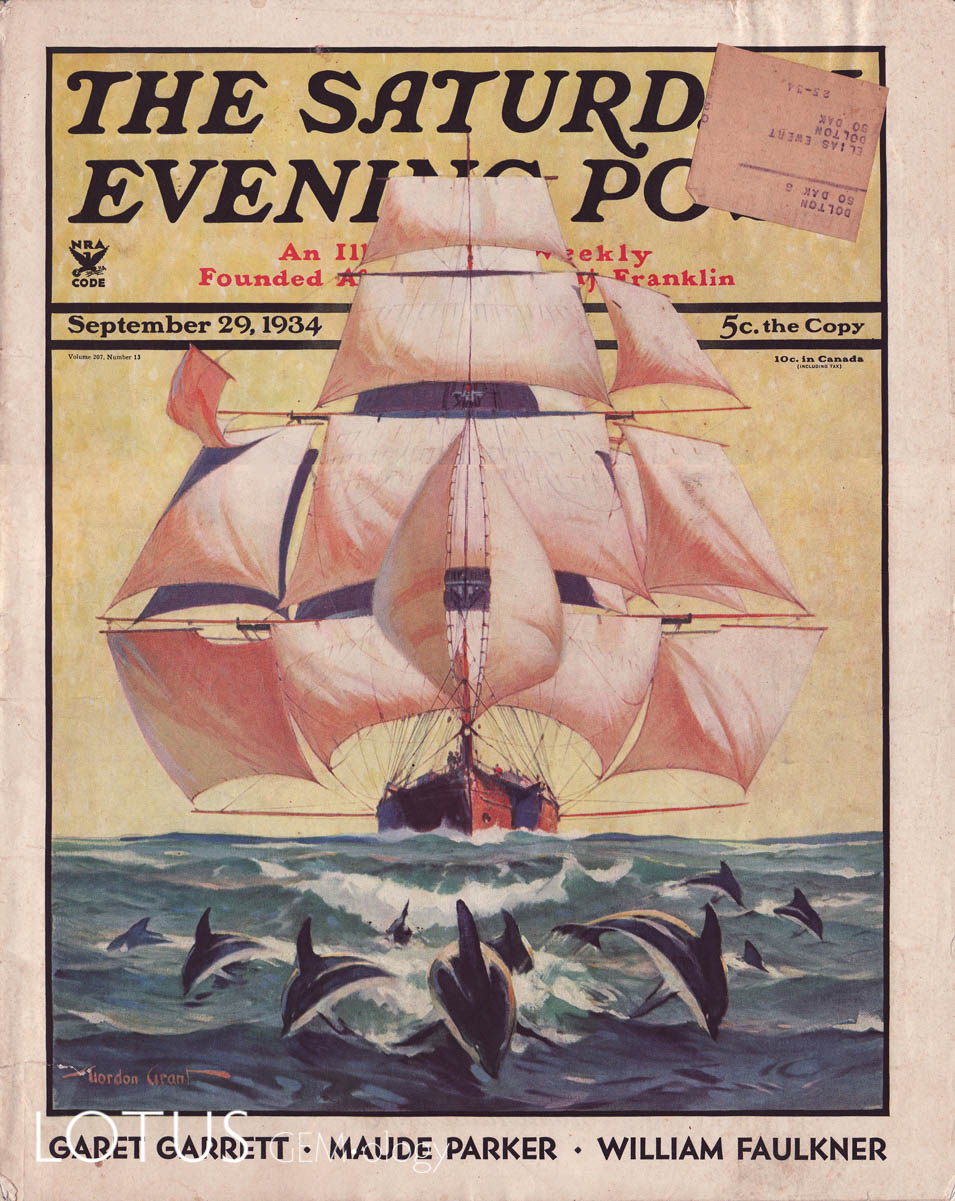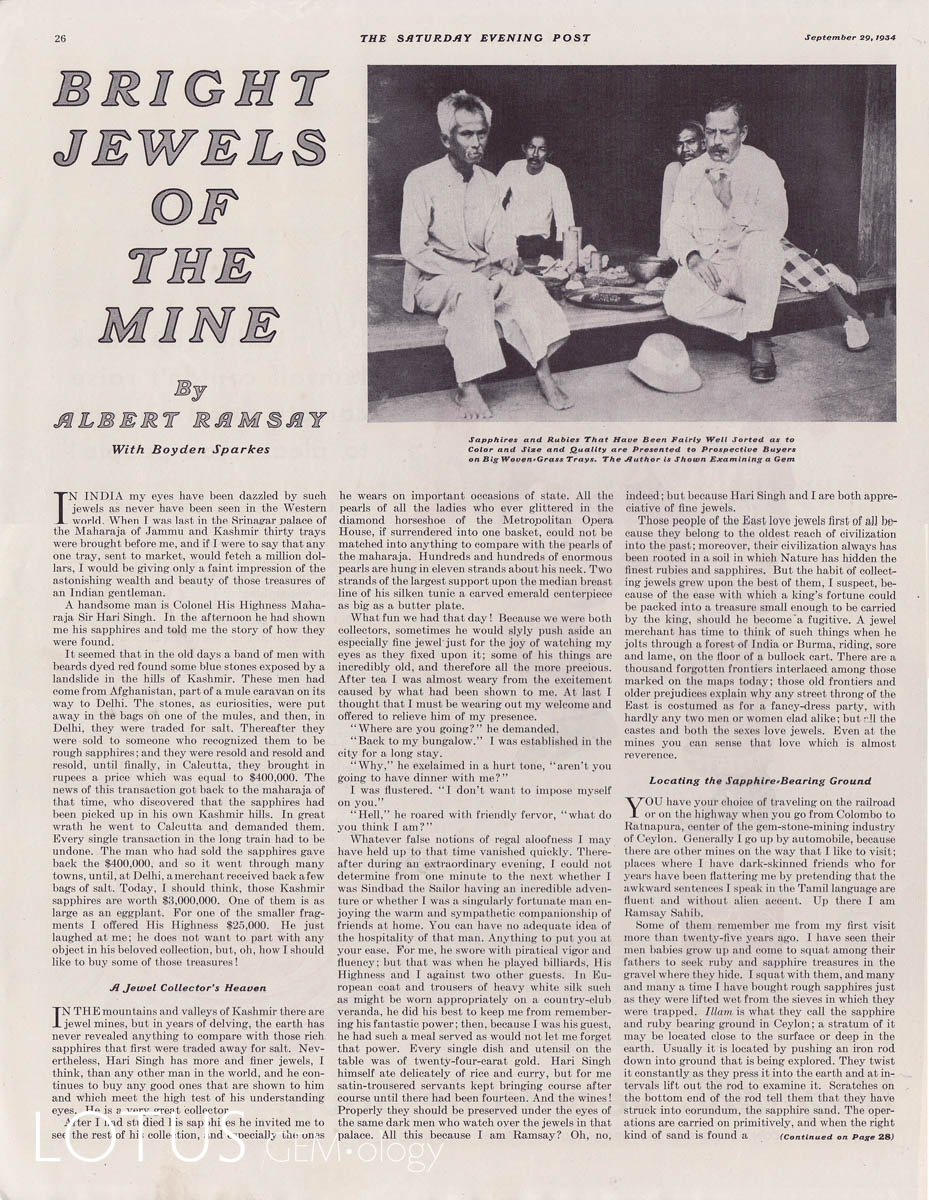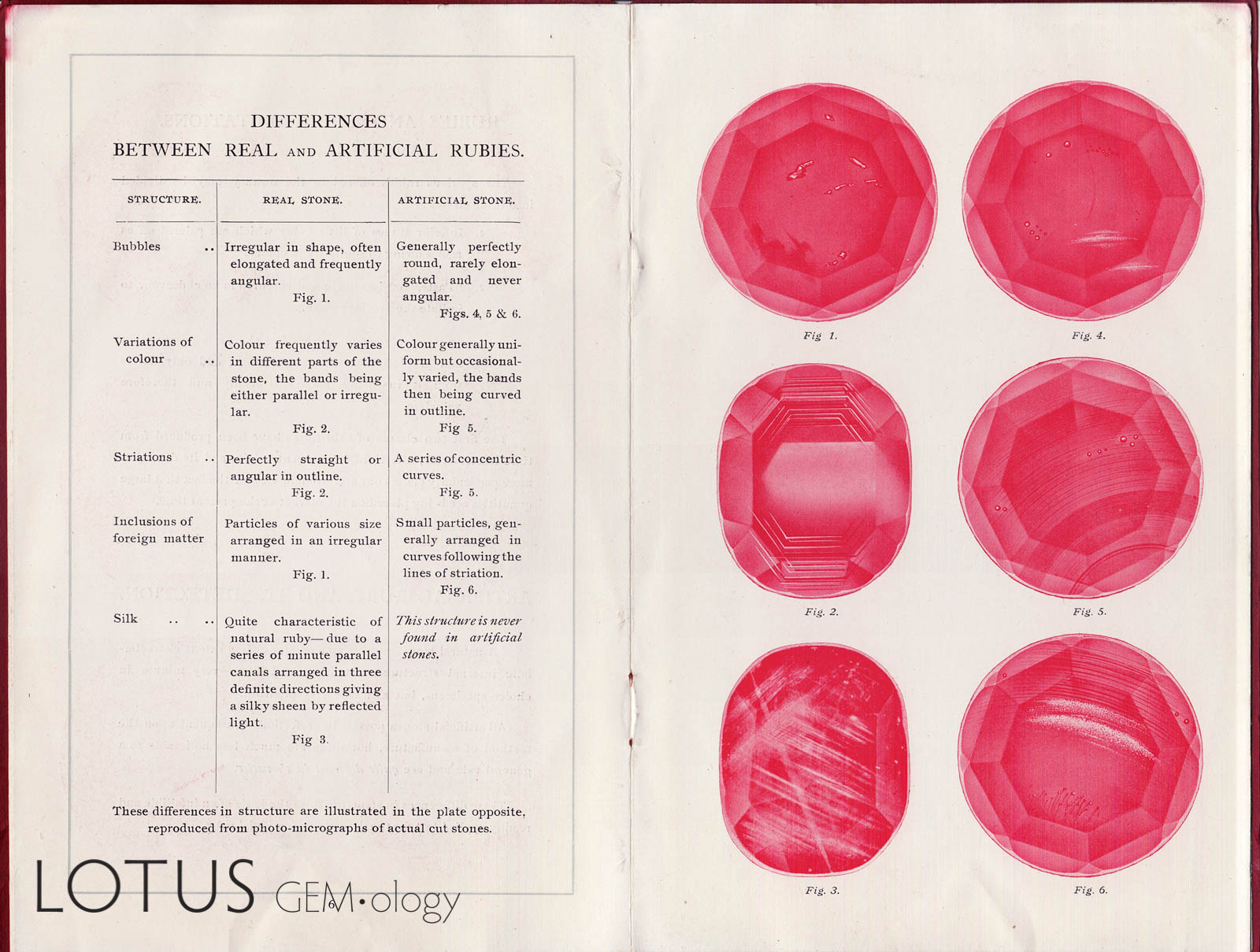A discussion of the literature of ruby and sapphire (corundum), with particular emphasis on the most collectible books covering ruby and sapphire around the world.
Hidden Treasures | Lotus Gemology's Special Literature GuidesFor those who wish to explore the literature of gems further, we recommend the following:
Key Reference BooksBelow are listed key reference sources for the literature on gems, minerals, jewelry and allied fields. To access a full list with cover images and abstracts, just do a general search on "bibliography" in our Four Treasures Reference Database.
|
Introduction to Collecting Books on Ruby & Sapphire (Corundum)
When it comes to essays intended for the general reader, a reference list is often an afterthought, if present at all. The prevailing thought is that any form of scholarship will alienate a wide audience.
I disagree. The advancement of civilization is a direct result of previous discovery and the bibliography represents the genealogical record. Thus, in all of my writings I have made the conscious decision to clearly document my source material.
The literature on ruby and sapphire is extensive and over the past twenty years has greatly expanded. Even so, there are few monographs specifically devoted to these gems. Thus, if one truly wishes to become a Zen master of ruby and sapphire, you will need to drill deeply into the ancillary literature. This is not unlike mining itself. These gems are rare indeed. And thus, the knowledge of them is not easily found in banal country rock, but instead scattered in precious pockets where the creator hides her treasures.
My personal library contains over two thousand volumes, along with a digital reference database of over 6000 entries relating to gems. I have done an extensive review of both, pruning what is a vast and ever-increasing sprawl into a vineyard containing the most select and delectable vintages. Due to space limitations, the focus here is largely on older collectible works.
Monographs
Let us begin the journey with books solely devoted to corundum. Considering the importance of ruby and sapphire, it is somewhat surprising how few monographs exist. The Barlow (1915) and Holland (1898) volumes are excellent but deal mainly with the mineralogical/geological aspects.
In 2012, a major unpublished manuscript on ruby and sapphire was released, edited by this author. Originally written in 1934 by J.F. Halford-Watkins, it provides the most complete coverage of that period.
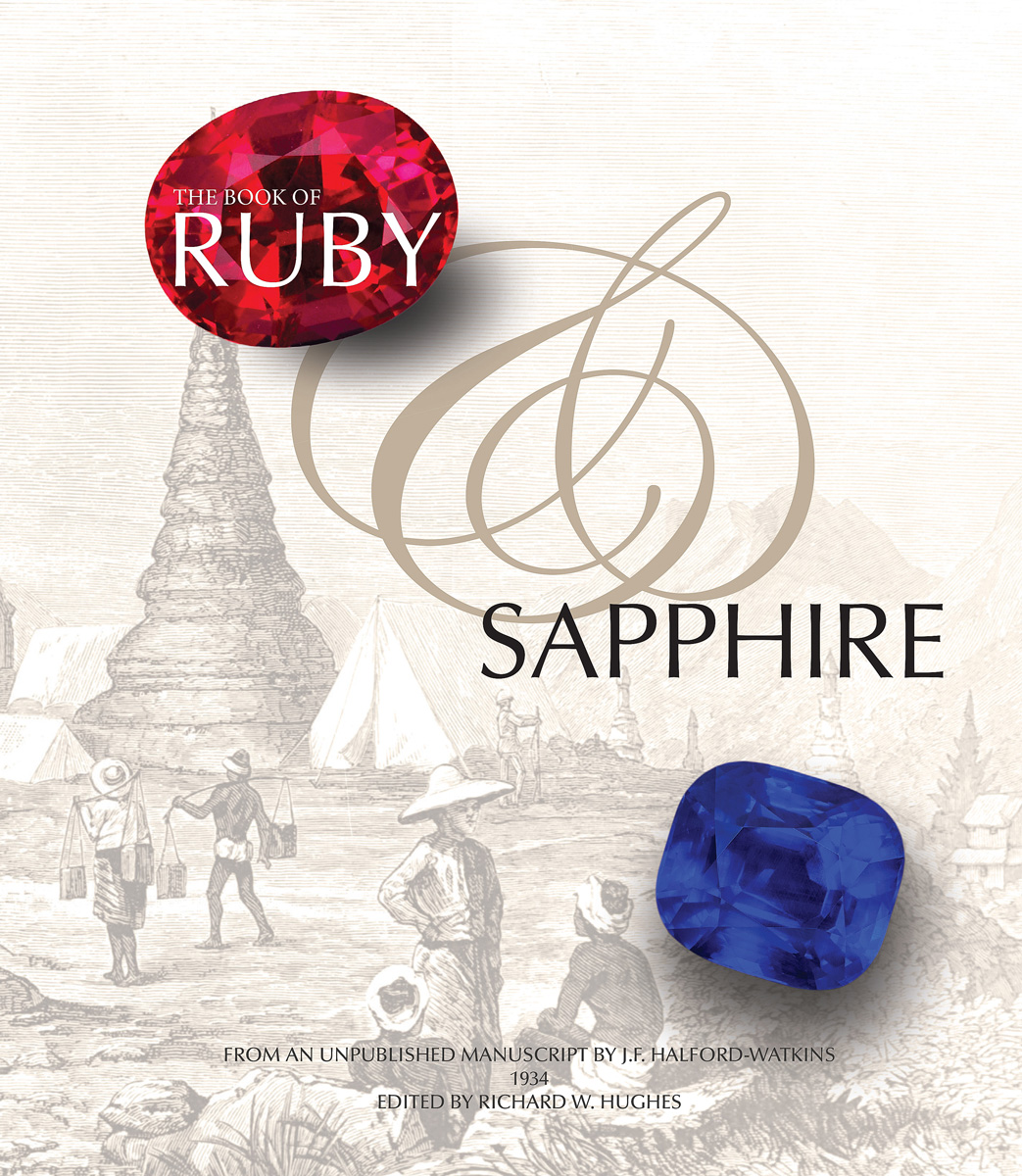 The cover of J.F. Halford-Watkins' Book of Ruby & Sapphire. This book, from an unpublished 1934 manuscript, was the first monograph devoted solely to the gemology of these gems. Sadly the author died before it could be published. The current author edited and published it in 2012.
The cover of J.F. Halford-Watkins' Book of Ruby & Sapphire. This book, from an unpublished 1934 manuscript, was the first monograph devoted solely to the gemology of these gems. Sadly the author died before it could be published. The current author edited and published it in 2012.
When it comes to modern works, the present author’s Ruby & Sapphire: A Collector’s Guide (Hughes, 2013) and Ruby & Sapphire: A Gemologist’s Guide (Hughes, 2013) collectively comprise the most thorough exploration extant of any single gem species, and reference lists in those two books are the most comprehensive ever published.
- Barlow, A.E. (1915) Corundum, its occurrence, distribution, exploitation, and uses. Canada Department of Mines, Geological Survey Memoir, No. 57, 377 pp.
- Halford-Watkins, J.F. (2012) The Book of Ruby and Sapphire. Hong Kong, RWH Publishing, [from a 1934 manuscript], 434 pp.
- Holland, T.H. (1898) A Manual of the Geology of India—Economic Geology: Corundum. Calcutta, Geological Survey of India, 2nd ed., Pt. 1, 79 pp.
- Hughes, R.W., Manorotkul, W. and Hughes, E.B. (2014) Ruby & Sapphire: A Collector's Guide. Bangkok, Gem and Jewelry Institute of Thailand, 384 pp.
- Hughes, R.W., Manorotkul, W. and Hughes, E.B. (2017) Ruby & Sapphire: A Gemologist's Guide. Bangkok, Lotus Publishing, 816 pp.
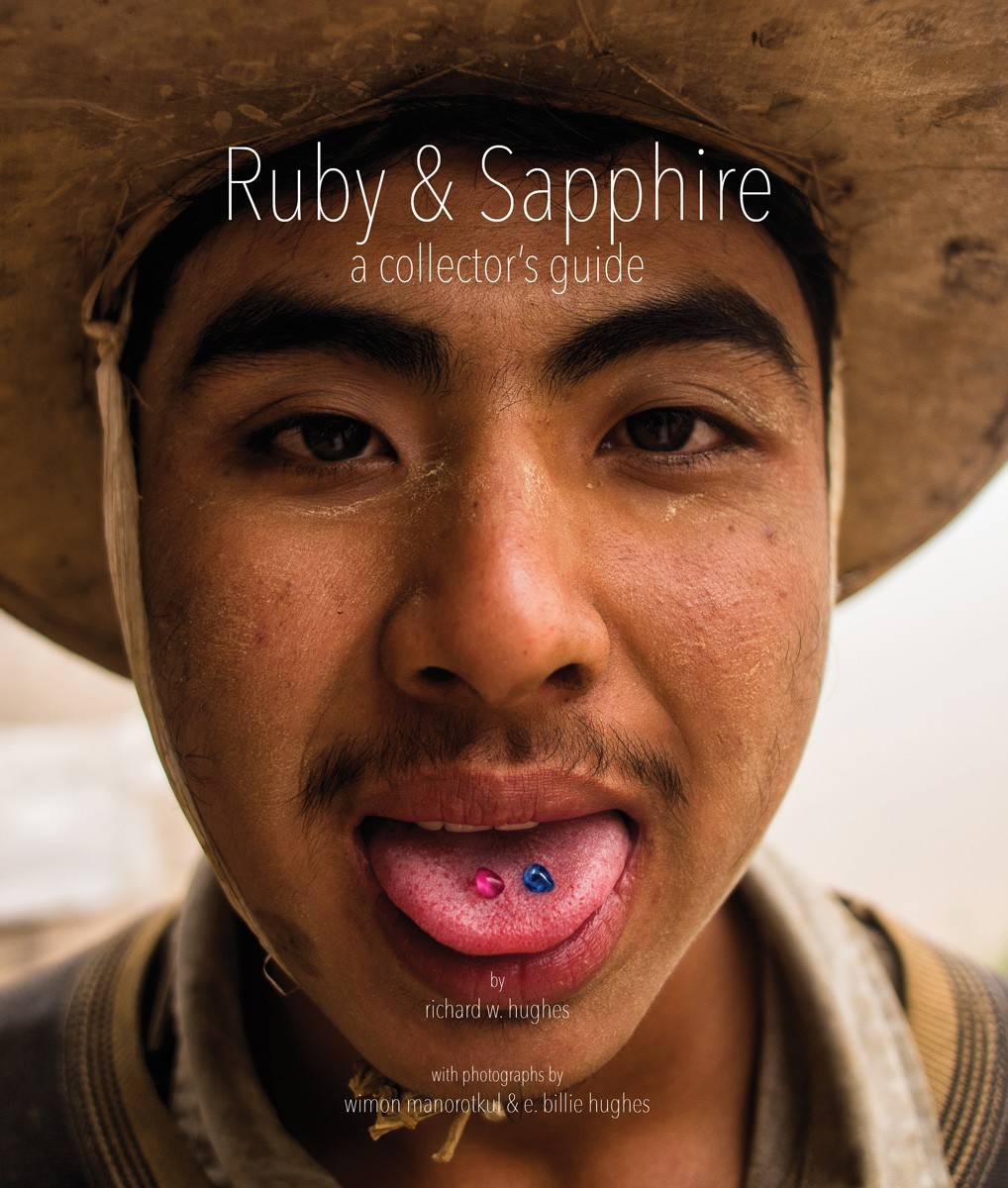 |
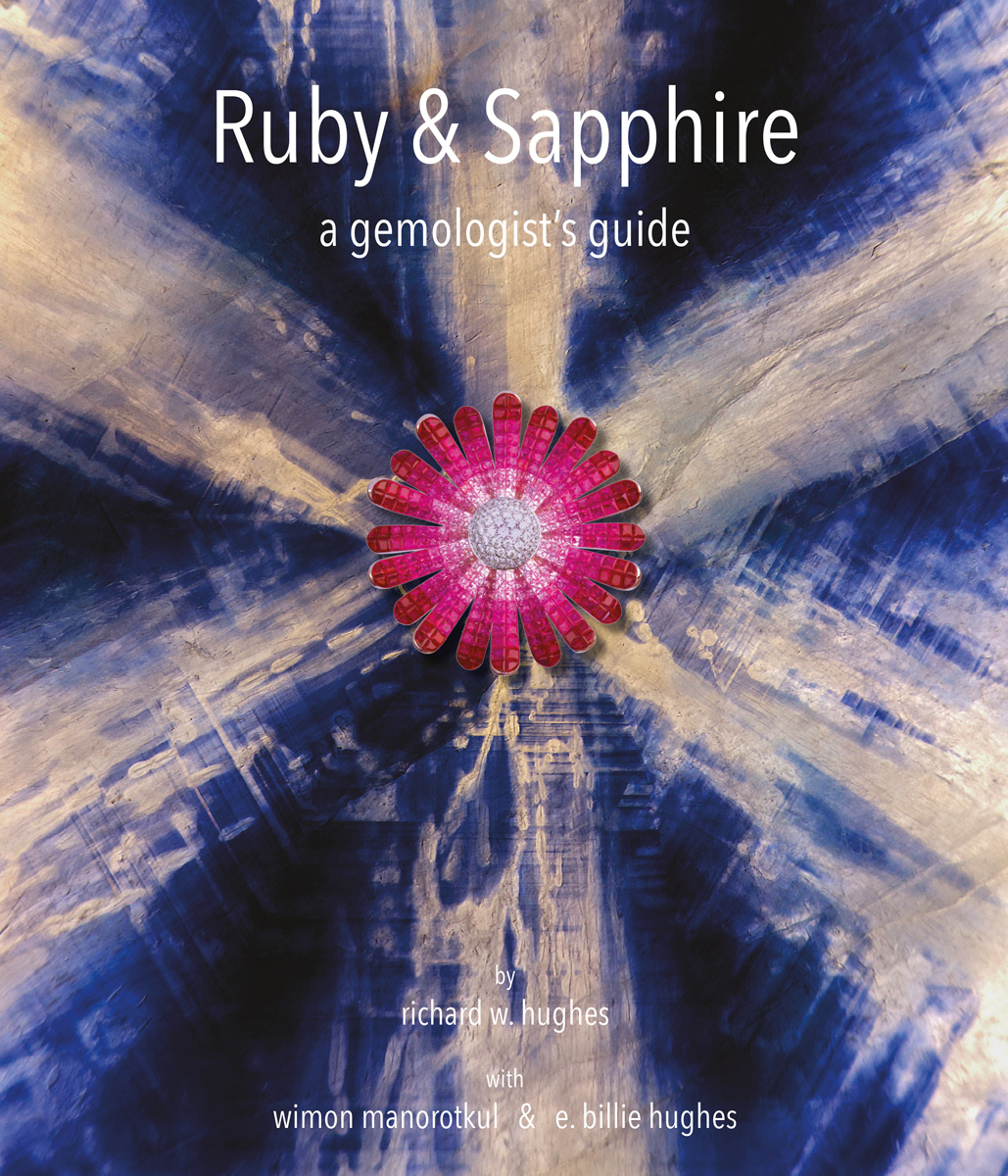 |
| The author's Ruby & Sapphire • A Collector's Guide (2014) and Ruby & Sapphire • A Gemologist's Guide (2017) arguably represent the most detailed coverage of a single gem species ever published. | |
Ancillary Works
In terms of gemological journals, there are three important titles that should be on everyone’s shelves: The Gemmologist (1931–1962), Gems & Gemology (1934–), and the Journal of Gemmology (1947–). Of these, Gems & Gemology towers above the field. A full run of G&G is the foundation of any serious gemological collection and at the time of this writing, the entire archive can now be downloaded free-of-charge from the GIA in PDF format.
History
The early history of ruby and sapphire is detailed in the Indian Puranas, which features a beguiling blend of mysticism and fact, the whole strewn like lotus petals along a garden path (Tagore, 1879, 1881). Tagore’s Mani-Málá is one of the most collectible of all gem books in existence, with original copies easily fetching over US$15,000 (when they can be found).
In the 9th century, the great al-Biruni (Beruni, 1989) published an entire text on precious stones, with an extensive section on the corundum gems, including how to separate ruby from spinel via specific gravity. Thankfully, we have a modern English translation of this wonderful book.
A crucial series of works appeared starting in 1798. Penned by Count de Bournon, Charles Greville and Richard Chenevix, they provided the scientific foundation for joining ruby and sapphire into a single mineral species – corundum.
- Beruni, M.i.A., al- (1989) The Book Most Comprehensive in Knowledge on Precious Stones: al-Beruni’s Book on Mineralogy [Kitab al-jamahir fi marifat al-jawahir]. Trans. by Said, H.M., One Hundred Great Books of Islamic Civilization, Natural Sciences No. 66, Islamabad, Pakistan Hijra Council, 355 pp.
- Bournon, C., de (1798) An analytical description of the crystalline forms of corundum, from the East Indies, and from China. Philosophical Transactions of the Royal Society of London, Vol. 88, pp. 428–448.
- Bournon, C., de (1802) Description of the corundum stone, and its varieties, commonly known by the names of oriental ruby, sapphire, &c.; with observations on some other mineral substances. Philosophical Transactions of the Royal Society of London, Vol. 22, pp. 233–326.
- Chenevix, R. (1802) Analysis of corundum, and some of the substances which accompany it. Philosophical Transactions of the Royal Society of London, Vol. 22, pp. 327–338.
- Greville, C. (1798) On the corundum stone from Asia. Philosophical Transactions of the Royal Society of London, Vol. 88, pp. 403–448.
- Tagore, S.M. (1879, 1881) Mani-Málá, or a Treatise on Gems. Calcutta, I.C. Bose & Co., 2 Vols., 1046 pp.
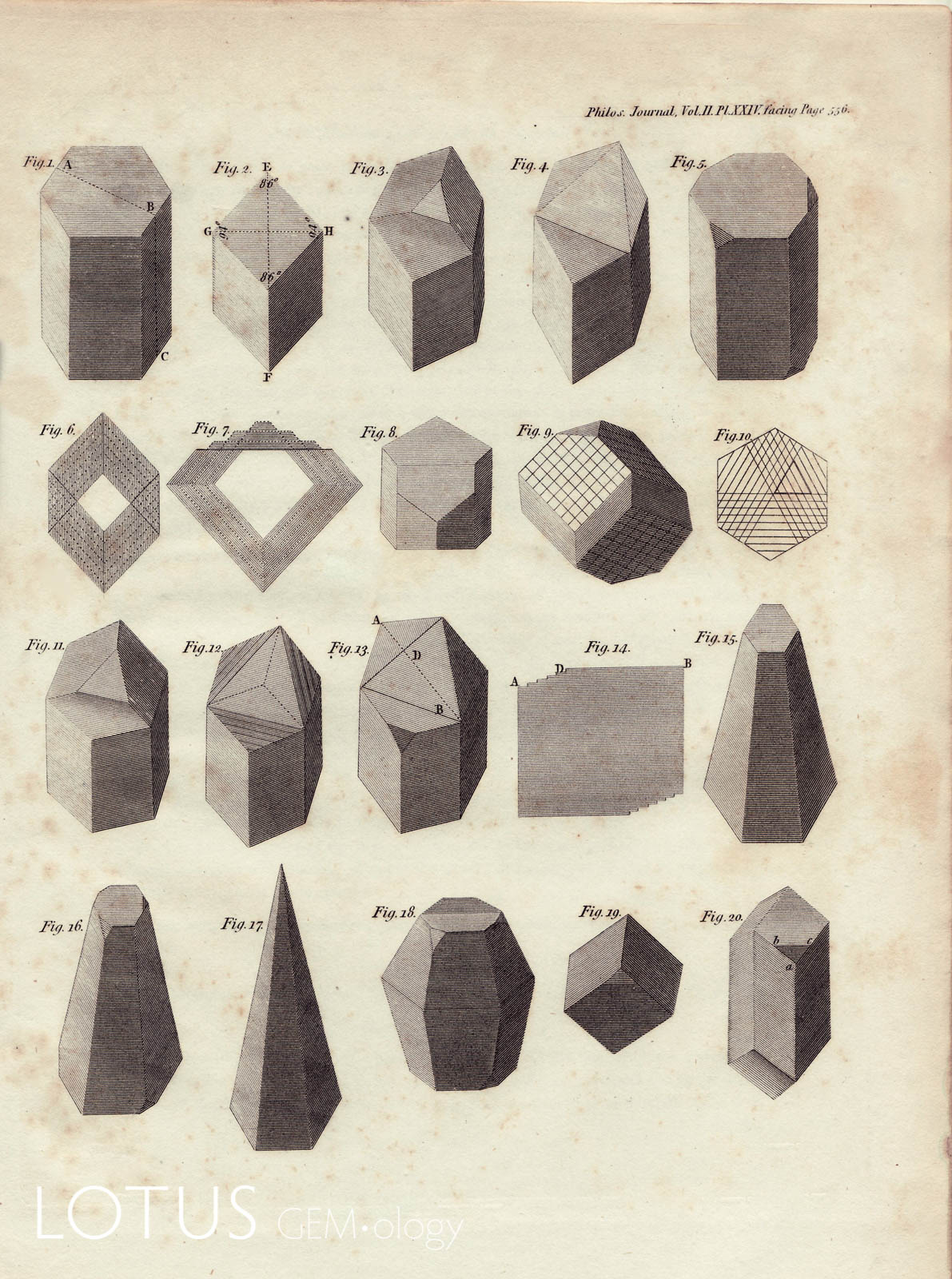 Corundum crystals from Charles Greville's 1799 publication. With Count de Bournon and Charles Greville's landmark papers, the Western world learned for the first time that ruby and sapphire represent a single mineral species, dubbed corundum after the Indian word for the same mineral—kurundum. Alas, that knowledge had been known in Asia for at least a thousand years.
Corundum crystals from Charles Greville's 1799 publication. With Count de Bournon and Charles Greville's landmark papers, the Western world learned for the first time that ruby and sapphire represent a single mineral species, dubbed corundum after the Indian word for the same mineral—kurundum. Alas, that knowledge had been known in Asia for at least a thousand years.
Notable Collections & Gems
There is a treasure trove of collectible literature in this area. Abdul Aziz’ The Imperial Treasury of the Indian Mughals volume is scarce and valuable. A number of fine books on Indian jewelry have appeared over the past few decades, highlighted by Jaffer’s Beyond Extravagance, which is also available in a rare velvet-boxed limited edition.
When it comes to the British crown jewels, the Blair et al. set (1998) is beyond lavish and belongs in all collections. Also excellent is Meen & Tushingham’s Crown Jewels of Iran, while Morel’s The French Crown Jewels is the best on that collection.
- Aziz, A. (1942) The Imperial Treasury of the Indian Mughuls. Lahore, privately published, reprinted 1972 by Idarah-I Adabiyat-I Delli, Delhi, 572 pp.
- Bank Markazi Iran (1971) The Crown Jewels of Iran. Teheran, Bank Markazi Iran (Central Bank of Iran), 50 pp.
- Blair, C., Bury, S. et al. (1998) The Crown Jewels: the History of the Coronation Regalia in the Jewel House of the Tower of London. London, The Stationery Office, 2 Vols., 812, 630 pp.
- Content, D.J. (2016) Ruby, Sapphire & Spinel: An Archaeological, Textual and Cultural Study. Belgium: Brepols Publishers, 2 Vols., viii + 452 pp.
- Jaffer, A., ed. (2013) Beyond Extravagance: A Royal Collection of Gems and Jewels. New York, Assouline, 411 pp.
- Meen, V.B. and Tushingham, A.D. (1968) The Crown Jewels of Iran. Toronto, University of Toronto Press, 159 pp.
- Morel, B. (1988) The French Crown Jewels. Antwerp, Fonds Mercator, 417 pp.
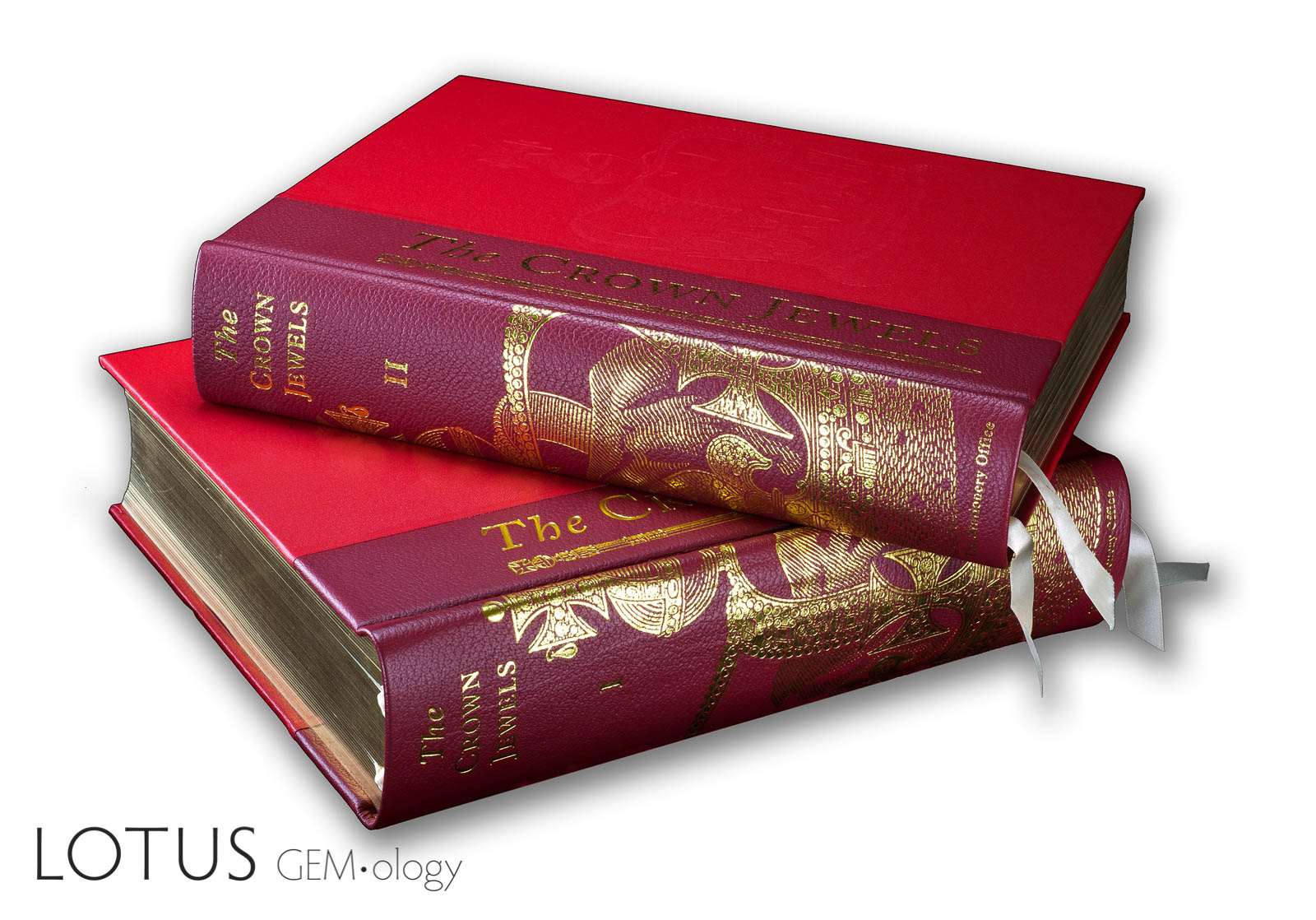 Blair's The Crown Jewels (1998) is one of the most sumptuous works ever published on a royal collection. Photo: Wimon Manorotkul. Click on the photo for a larger image.
Blair's The Crown Jewels (1998) is one of the most sumptuous works ever published on a royal collection. Photo: Wimon Manorotkul. Click on the photo for a larger image.
Sources
Australia
Australia has a large body of literature covering its sapphire deposits. The rarest and most collectible is the 1902 Dunstan report on Queensland sapphire, containing a number of excellent color illustrations.
- Dunstan, B. (1902) The sapphire fields of Anakie. Geological Survey of Queensland, Publications, pp. 1–26.
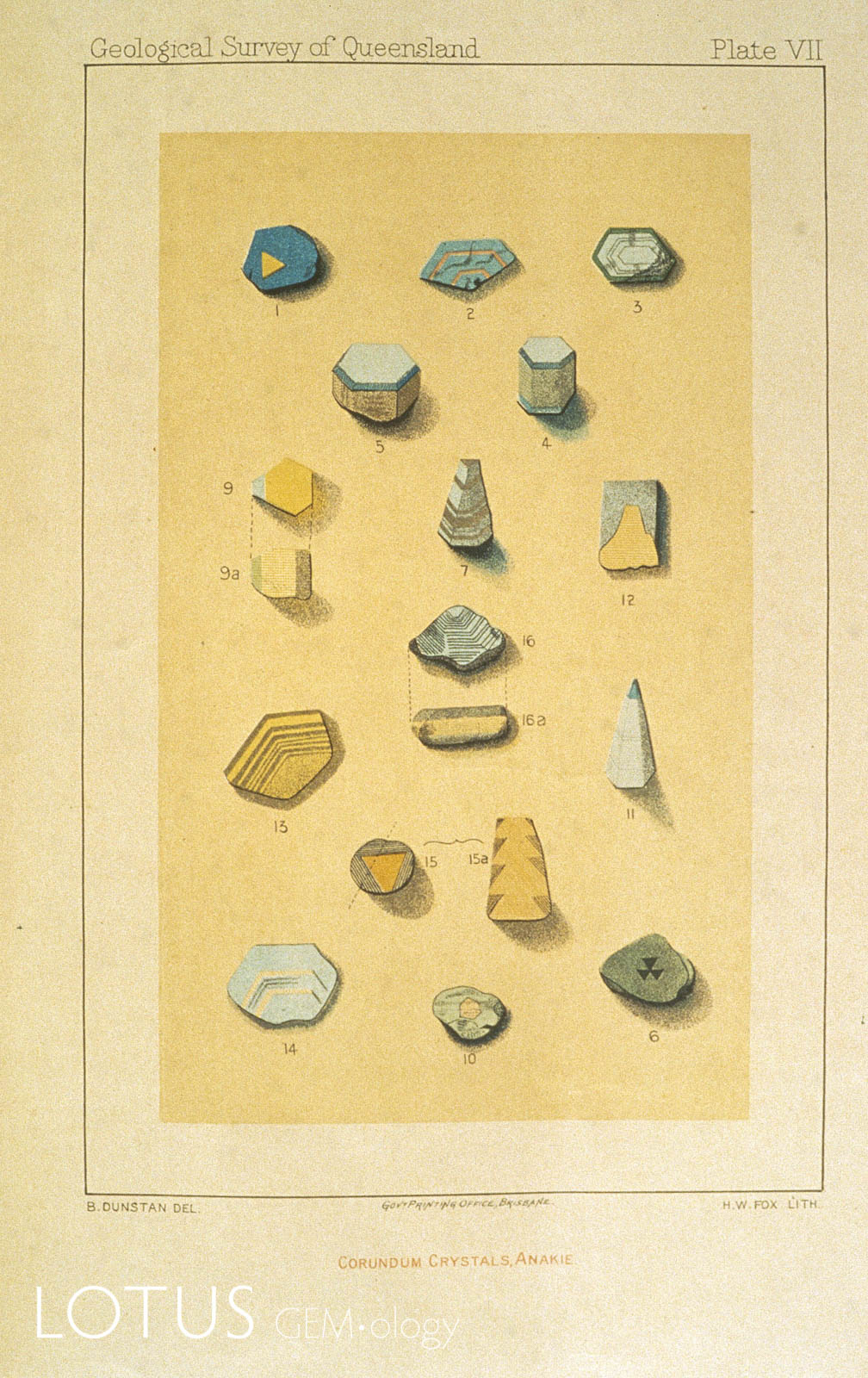 This colored plate from Dunstan's 1902 publication on Anakie (Queensland) sapphires shows various types of sapphire crystals. Click on the photo for a larger image.
This colored plate from Dunstan's 1902 publication on Anakie (Queensland) sapphires shows various types of sapphire crystals. Click on the photo for a larger image.
Kashmir (India)
The first eyewitness account of the Kashmir sapphire mines is given by T.H.D. La Touche (1890) and it features the earliest map and photos of the deposit.
- La Touche, T.D. (1890) The sapphire mines of Kashmir. Records, Geological Survey of India, Vol. 23, Part 2, pp. 59–69.*
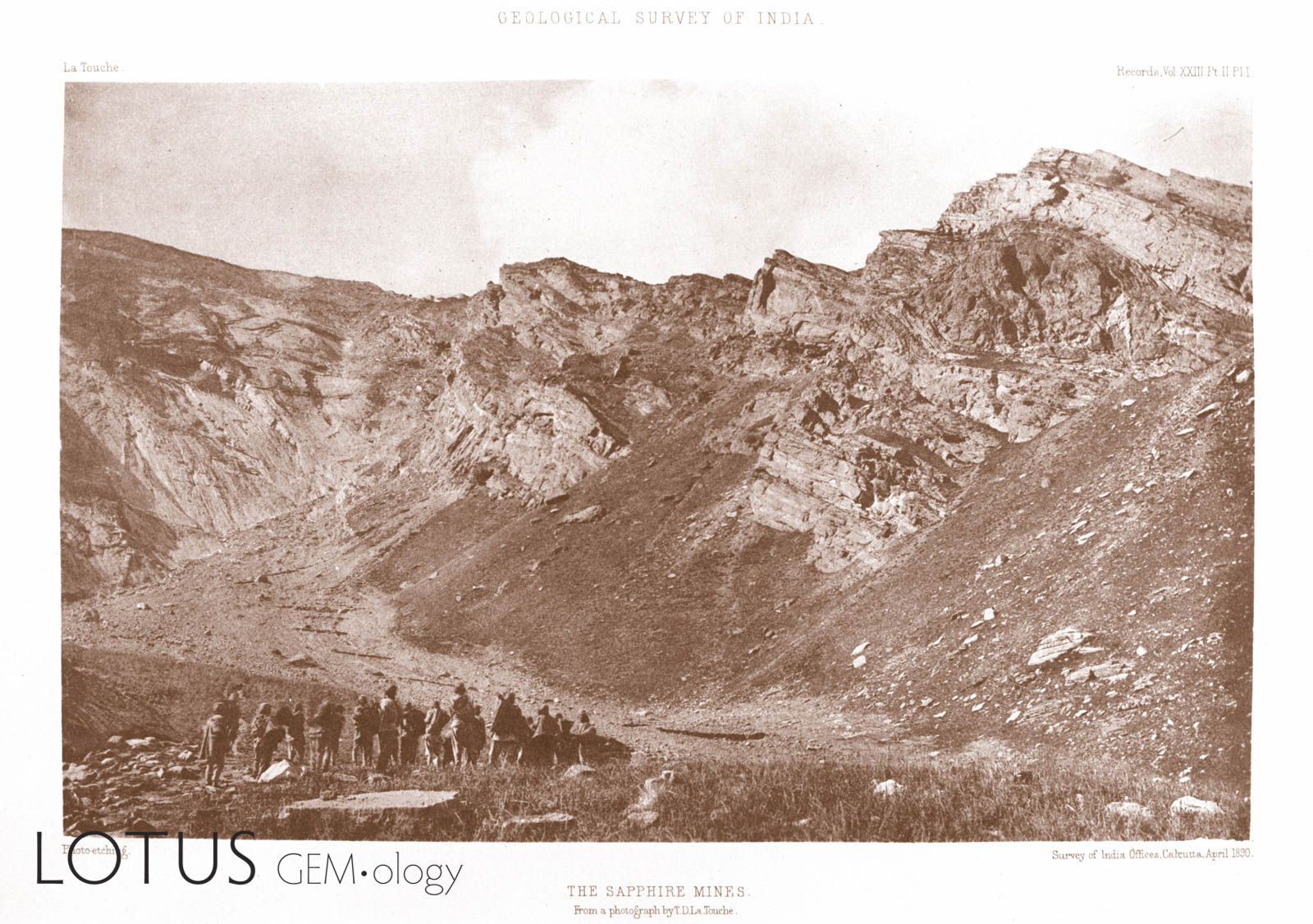 This photo from La Touche's rare 1890 description of the Kashmir sapphire mines was the first ever published on this storied deposit. Click on the photo for a larger image.
This photo from La Touche's rare 1890 description of the Kashmir sapphire mines was the first ever published on this storied deposit. Click on the photo for a larger image.
Madagascar
When it comes to Madagascar, Lacroix’s three-volume Minéralogie de Madagascar is an extremely scarce and valuable work.
- Lacroix, A. (1922, 1923) Minéralogie de Madagascar. Paris, Société d’Editions Géographiques, Maritimes et Coloniales, 3 Vols., I, 624 pp.; II, 694 pp.; III, 450 pp.*
Myanmar (Burma)
It is not surprising that the literature on the world’s most famous ruby and sapphire mines is more extensive than for any other locality. Even the well-known French writer, Joseph Kessel, wrote a book about Mogok (1960). For the lovers of period photos, the best are found in Scott O’Connor’s The Silken East, (1904), while collectors of old plates, will appreciate those found in the Graphic and Illustrated London News. Another must-have is George’s Burma Gazetteer: Ruby Mines District, which features a colored map of the Mogok Stone Tract and the first description of the Burmese method of gem classification. An even better map can be found in Gordon’s 1888 paper.
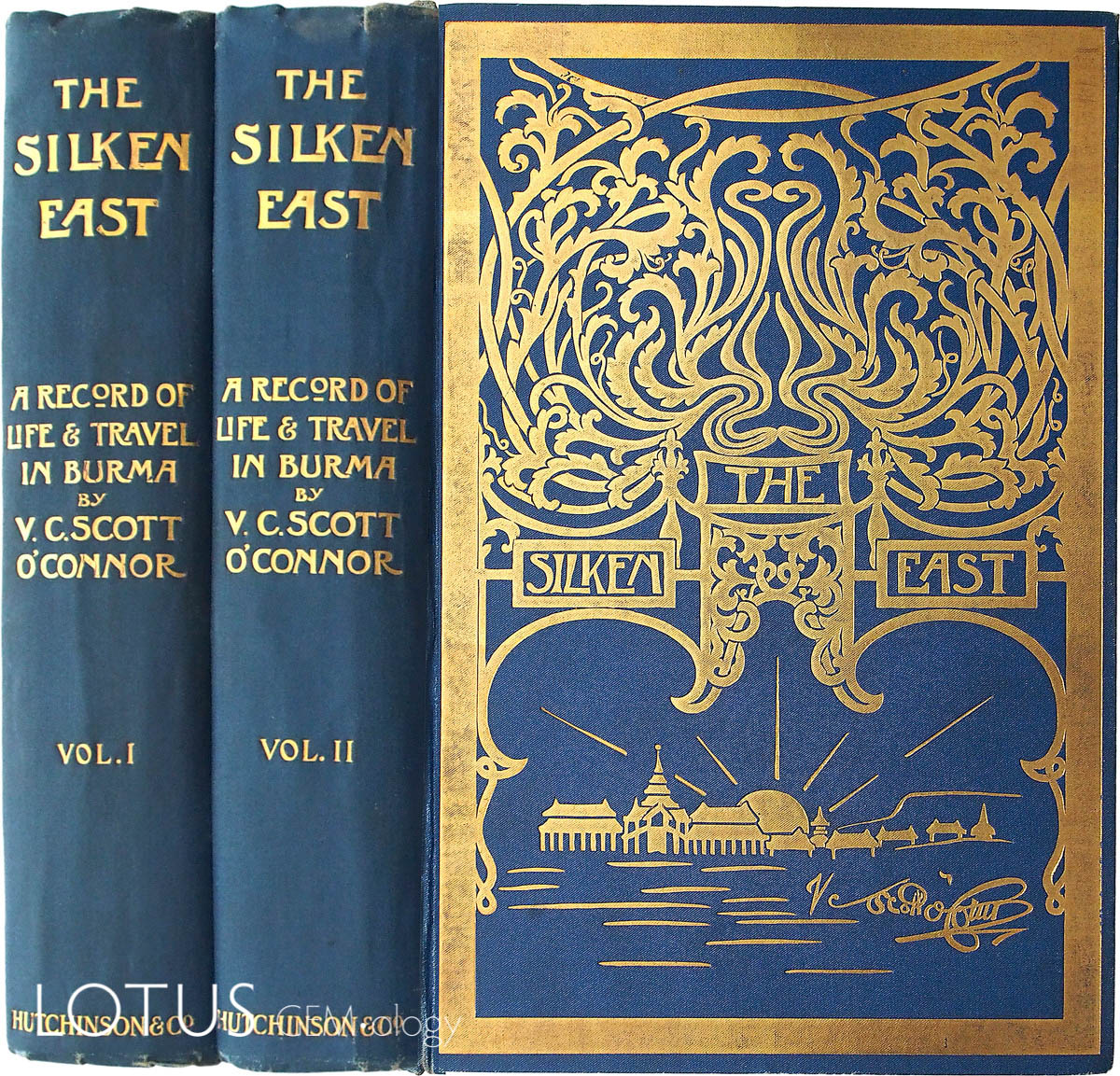 Volume 2 of V.C. Scott O'Connor's The Silken East contains an entire chapter on Myanmar's Mogok Stone Tract, along with more than two dozen classic photos. As such, it is considered a must-have for the collector of books on ruby and sapphire.
Volume 2 of V.C. Scott O'Connor's The Silken East contains an entire chapter on Myanmar's Mogok Stone Tract, along with more than two dozen classic photos. As such, it is considered a must-have for the collector of books on ruby and sapphire.
- Atlay, F. and Morgan, A.H. (1905) The Burma Ruby Mines. London, The Burma Ruby Mines, Limited, pamphlet with map and photos.
- Brown, C.B. and Judd, J.W. (1896) The rubies of Burma and associated minerals; their mode of occurrence, origin and metamorphoses: a contribution to the history of corundum. Philosophical Transactions of the Royal Society of London, Series A, Vol. 187, pp. 151–228.
- George, E.C.S. (1915) Burma Gazetteer: Ruby Mines District. Rangoon, Supdt., Govt. Printing and Staty., Burma, Volume A, Reprinted 1962, 151 pp., map.
- Gordon, R. (1888) On the ruby mines near Mogok, Burma. Proceedings of the Royal Geographical Society, New Series, Vol. 10, No. 5, May, pp. 261–275; map, p. 324.
- Graphic (1888) The valley of Mogok—Ruby Mines District, Upper Burmah. The Graphic, London, Feb. 4, pp. 106–107.
- Illustrated London News (1886–1887) [The ruby mines of Burmah]. Illustrated London News, London, 1886: Jan. 16, p. 1; 1887: Jan. 22, p. 89; Feb. 19, pp. 205–206; Feb. 26, p. 227; Aug. 6, pp. 149–150; Aug. 27, p. 246; Sept. 3, p. 270; Oct. 15, pp. 453–454; Nov. 19, p. 713.
- Iyer, L.A.N. (1953) The geology and gem-stones of the Mogok Stone Tract, Burma. Memoirs, Geological Survey of India, Vol. 82, 100 pp.
- Kessel, J. (1960) Mogok: The Valley of Rubies. Trans. by Rodway, S., London, Macgibbon & Kee, 198 pp.
- Scott O’Connor, V.C. (1904) The Silken East. London, Hutchinson & Co., 2 Vols., American edition 1905, 842 pp.
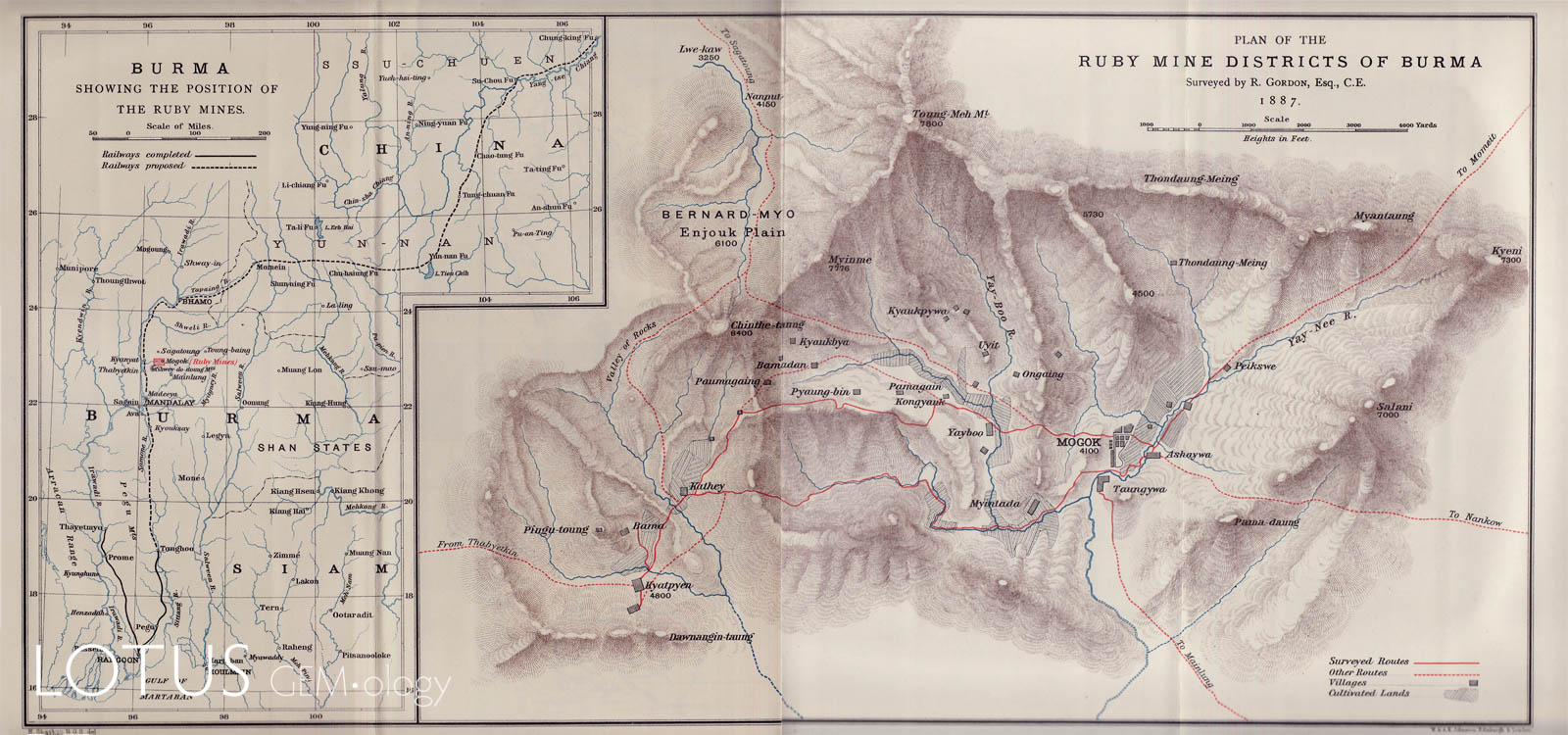 Robert Gordon was on the original British expedition to Mogok (Myanmar). His map, published by the Royal Geographical Society in 1888, was the first detailed map of the region.
Robert Gordon was on the original British expedition to Mogok (Myanmar). His map, published by the Royal Geographical Society in 1888, was the first detailed map of the region.
Sri Lanka
While the ruby and sapphire deposits of Sri Lanka are probably the oldest, the literature surrounding them is far thinner than that of Myanmar’s mines. Highlights include Wadia and Fernando's 1945 paper.
- Wadia, D.N. and Fernando, L.J.D. (1945) Gems and semi-precious stones of Ceylon. Records, Department of Mineralogy of Ceylon, Professional Paper No. 2, pp. 13–44.
Thailand/Cambodia
There are a number of rare and collectible works on ruby and sapphire in Thailand. Smyth’s Five Years in Siam is probably the best, and the original edition with the elephants on the cover is highly sought after, containing both a map and woodcut illustrations of the Chanthaburi/Trat/Pailin mines.
- Smyth, H.W. (1898) Five Years in Siam: From 1891 to 1896. New York, Scribner’s, 2 Vols., Reprinted 1994, Bangkok, White Lotus, 330, 337 pp.
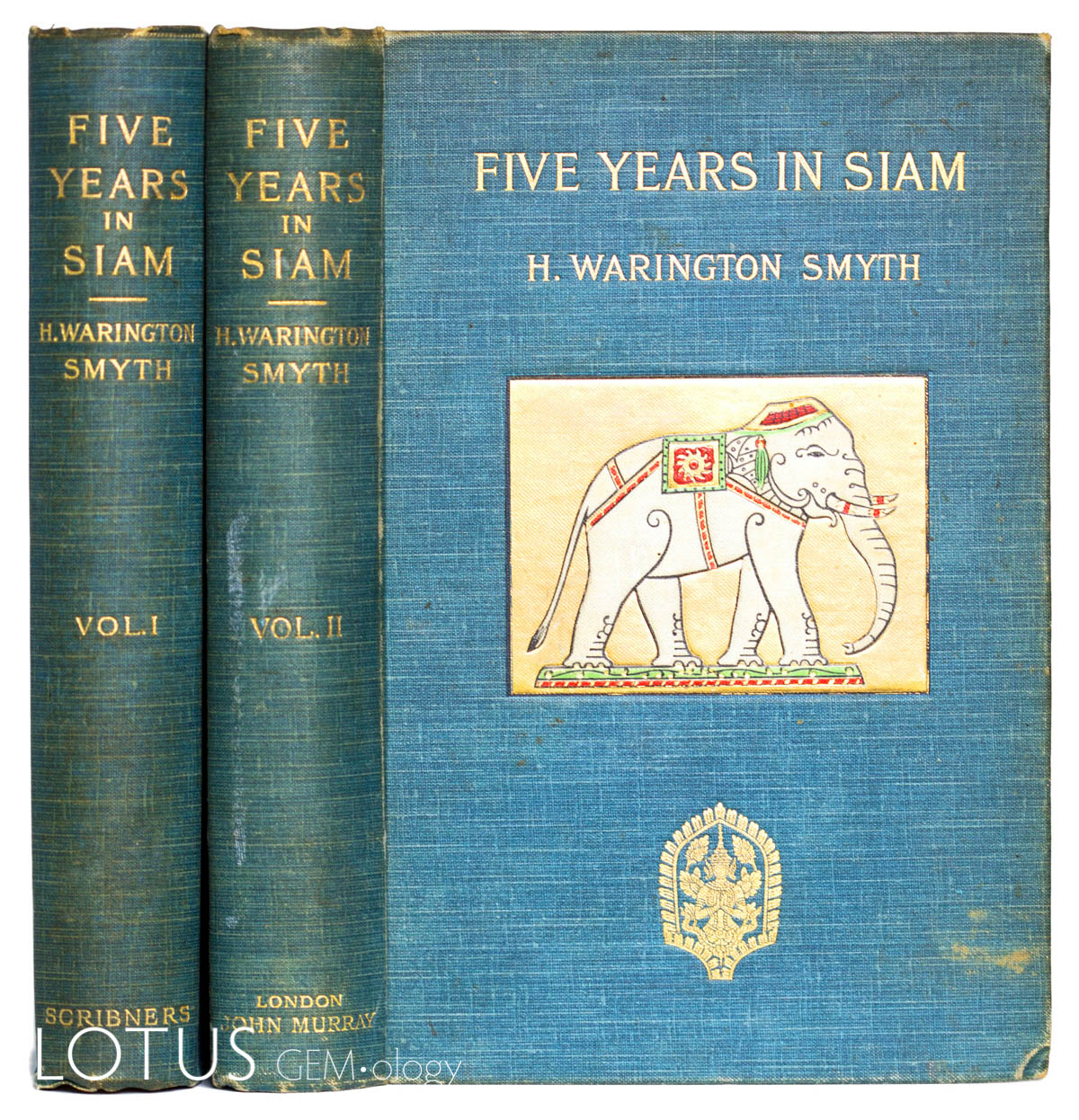 The finest 19th century resource on ruby and sapphire mining at Chanthaburi and Trat (Thailand) and Pailin (Cambodia) is H. Warington Smyth's Five Years in Siam (1898). It is highly sought after for its many plates, maps and decorative cover.
The finest 19th century resource on ruby and sapphire mining at Chanthaburi and Trat (Thailand) and Pailin (Cambodia) is H. Warington Smyth's Five Years in Siam (1898). It is highly sought after for its many plates, maps and decorative cover.
USA
Montana’s sapphires are a well-kept secret, little known outside America. Among the collectible literature are the Kunz paper from 1897 and the small booklets produced by the New Mine Sapphire Syndicate in 1914 and 1924.
- New Mine Sapphire Syndicate (1914) A Royal Gem: A Monograph on the Sapphire, With a Brief History and Description of the “New Mine.” London, New Mine Sapphire Syndicate, 44 pp.
New Mine Sapphire Syndicate (1924) The Royal Gem. London, New Mine Sapphire Syndicate, 20 pp.
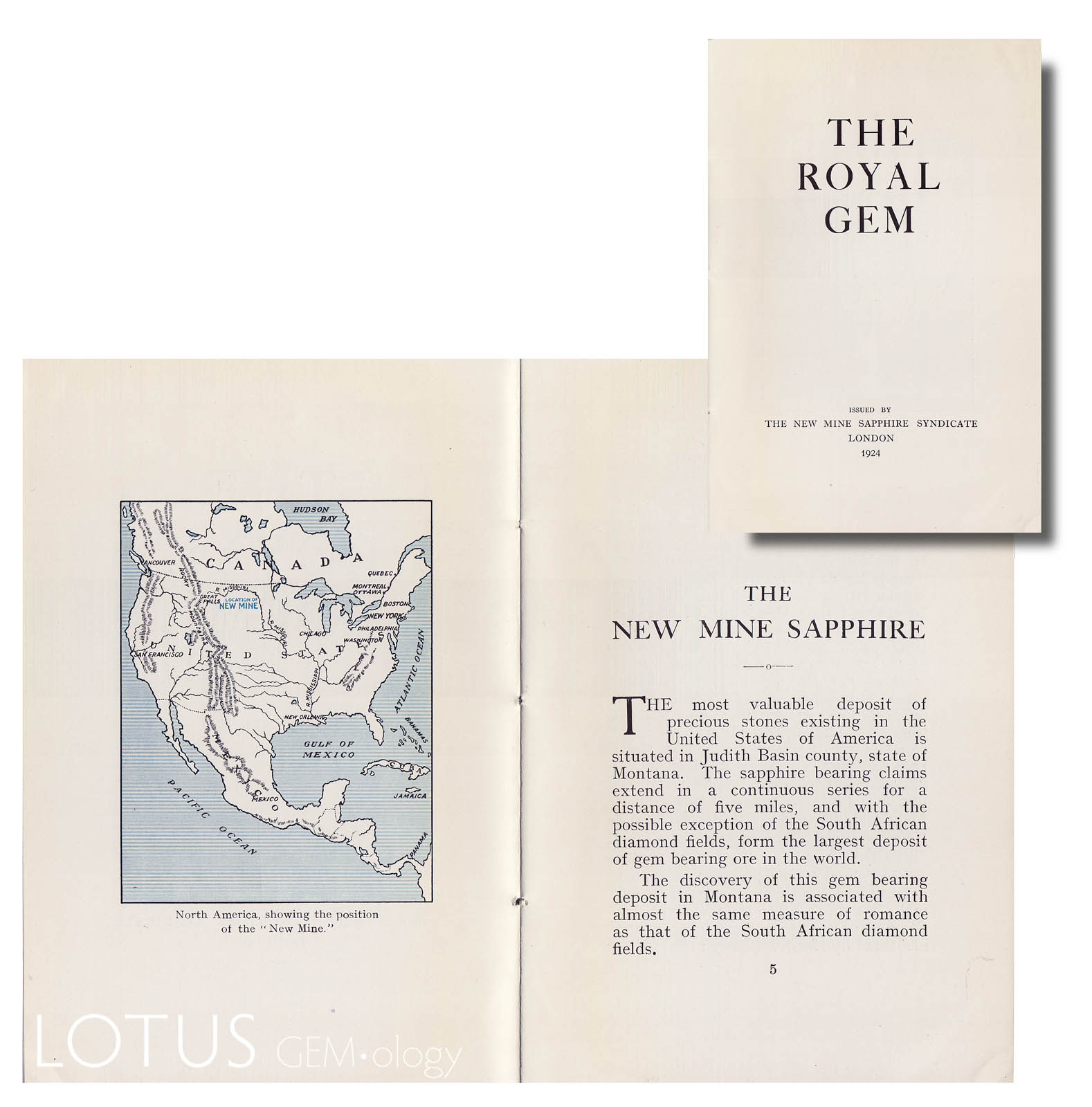 This rare 1924 booklet was published by the British New Mine Sapphire Syndicate to promote their Yogo, Montana sapphire mine in the US. Because such documents did not feature a hard cover, they were often discarded. Termed "ephemera" in the book collecting world, they are among the rarest and most collectible of items.
This rare 1924 booklet was published by the British New Mine Sapphire Syndicate to promote their Yogo, Montana sapphire mine in the US. Because such documents did not feature a hard cover, they were often discarded. Termed "ephemera" in the book collecting world, they are among the rarest and most collectible of items.
Other works
Albert Ramsay was a trader and gem cutter who wrote a small book, In Search of the Precious Stone, as well as a series of articles on gems for the Saturday Evening Post. Both of these are highly readable and collectible.
- Ramsay, A. (1925) In Search of the Precious Stone. New York, Albert Ramsay & Co., 50 pp.
- Ramsay, A. and Sparkes, B. (1934) Bright jewels of the mine. Saturday Evening Post, Parts 1–3, 15 Sept.: pp. 10–11, 65–66, 69; 29 Sept.: pp. 26, 28, 34, 36, 39; 20 Oct.: pp. 26–27, 76, 78, 80.
Gemology
Inclusions
One of the earliest scientists to write on inclusions was the famous Scotsman, David Brewster. In an early publication he accurately described a negative crystal in what was probably a Sri Lankan sapphire, right down to the diaspore needles growing within.
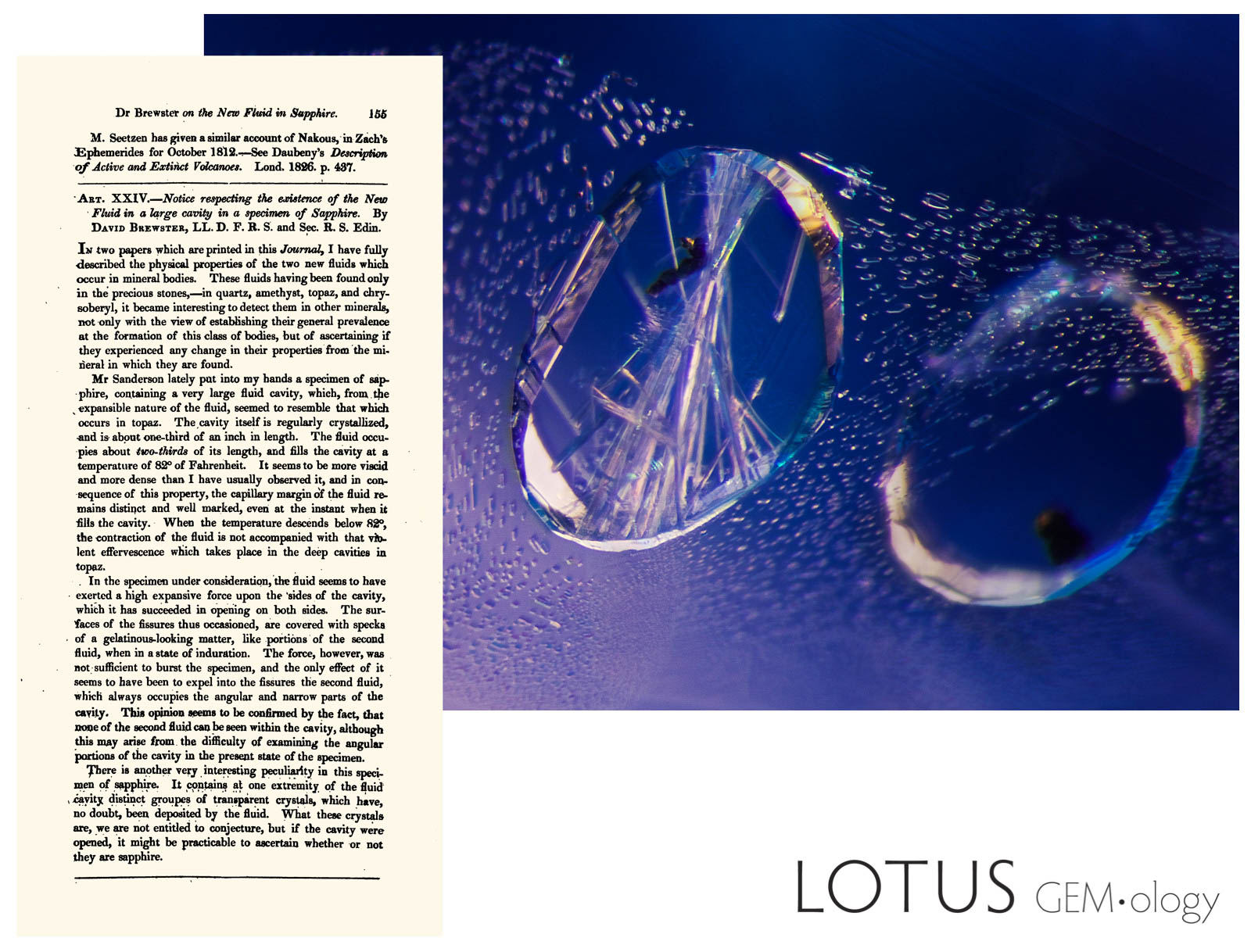 David Brewster's 1927 article (left) perfectly describes the kind of negative crystals that are typical of Sri Lankan sapphires (right). Photomicrograph: E. Billie Hughes.
David Brewster's 1927 article (left) perfectly describes the kind of negative crystals that are typical of Sri Lankan sapphires (right). Photomicrograph: E. Billie Hughes.
Occasionally an individual produces something that completely changes the way we see, hear and think about a subject. Edward Gübelin’s 1973 Internal World of Gemstones was such a landmark. Not only did Gübelin use science to show the importance of inclusions in gemology, but completed the circle by linking the aesthetic beauty of the microscopic interior of gems to their external magnificence. This was performed with a combination of artistic photography and poetic prose and nothing has been the same since. The Internal World of Gemstones is a seminal work that all gem connoisseurs should own and treasure, and one that is currently vastly undervalued.
Gübelin’s later collaborations with John Koivula further develop these concepts. Koivula’s photomicrographs show an extraordinary attention to technical detail, coupled with a playful whimsy that rewards the patient viewer with continual surprises. Together the Gübelin/Koivula volumes are a paradigm-changing tour-de-force and stand with the works of Kunz and Sinkankas as the all-time best of gemology. Many are still in print. Get them while you can.
- Brewster, D. (1827) Notice respecting the existence of the new fluid in a large cavity in a specimen of sapphire. Edinburgh Journal of Science, Vol. 6, pp. 155–156.
- Gübelin, E.J. (1973) Internal World of Gemstones. Zürich, ABC Verlag, reprinted 1983, 234 pp.
- Gübelin, E.J. and Koivula, J.I. (1986) Photoatlas of Inclusions in Gemstones. Zürich, Switzerland, ABC Edition, revised Jan., 1992, 532 pp.
- Gübelin, E.J. and Koivula, J.I. (2005) Photoatlas of Inclusions in Gemstones, Volume 2. Basel, Switzerland, Opinio Publishers, 830 pp.
- Gübelin, E.J. and Koivula, J.I. (2005) Photoatlas of Inclusions in Gemstones, Volume 3. Basel, Switzerland, Opinio Publishers, 672 pp.
Synthetics & treatments
France was the epicenter of early research on the synthesis of ruby and thus much of the important work comes from French publications. Fremy’s Synthèse du Rubis (1891) is a rare and valuable addition to one’s library, featuring many colored plates detailing his experiments. Another classic is the Heaton booklet (n.d., ca. 1912) produced by the Burma Ruby Mines Ltd. in response to Verneuil’s synthetic ruby. This is extremely rare and highly collectible.
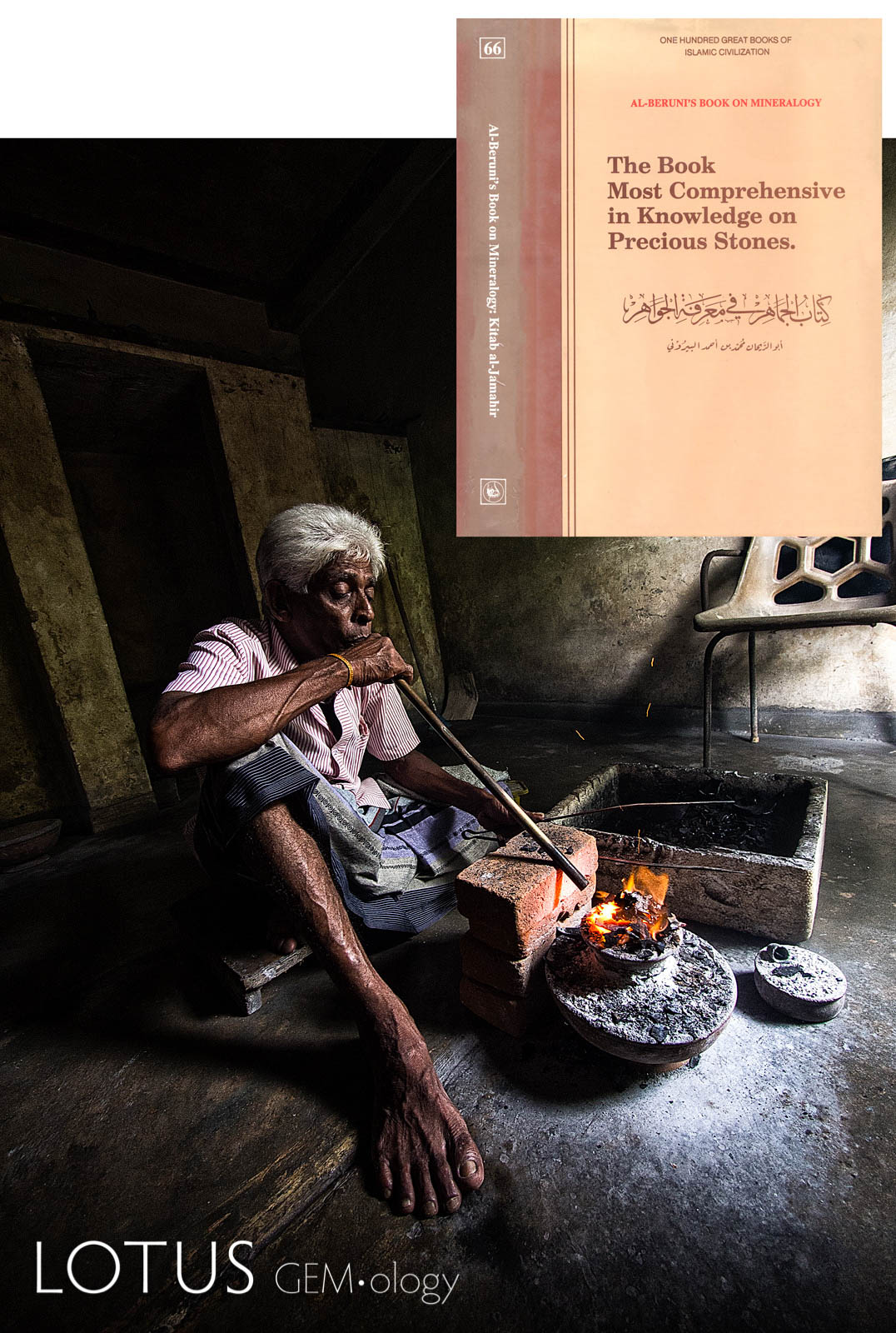 Blowpipe heating of ruby to remove bluish overtones was accurately described by al Beruni (Biruni) (inset) over a thousand years ago. Photo: E. Billie Hughes in Ratnapura, Sri Lanka, 2015.
Blowpipe heating of ruby to remove bluish overtones was accurately described by al Beruni (Biruni) (inset) over a thousand years ago. Photo: E. Billie Hughes in Ratnapura, Sri Lanka, 2015.
One of the truly unsung pieces of literature on synthetic ruby is that of Wodiska (1909), who provides a spectacular account that those with an interest in conspiracy will find of great interest.
While gem treatments have been practiced for more than two millennia, the treatments of ruby and sapphire exploded in the 20th century. As early as 1916, rumors of high-temperature treating were published in the Bulletin of the Imperial Institute. Nassau’s 1984 book, Gemstone Enhancement provides an excellent history of the field.
- Anonymous (1916) Sapphire-mining industry of Anakie, Queensland. Bulletin of the Imperial Institute, Vol. 14, April–June, pp. 253–261.
- Fremy, E. (1891) Synthèse du Rubis. Paris, Libraire des Corps Nationaux, 58 pp.
- Heaton, N. (n.d., ca. 1912) Rubies: Some Practical Hints on the Detection of Artificial and Imitation Stones. London, Burma Ruby Mines Ltd., 15 pp.
- Nassau, K. (1984) Gemstone Enhancement. London, Butterworths, 2nd edition, 1994 (252 pp.), 221 pp.
- Wodiska, J. (1909) A Book of Precious Stones. New York, Putnam, 365 pp.
Reference Works
When it comes to collecting books about gems and minerals, I would be remiss if I did not say a few words about John Sinkankas’ Gemology: An Annotated Bibliography. Decades in the making, it was prepared with a meticulous degree of care that is so often absent in today’s computerized world. For those who are involved in gemology, this is quite simply a must-have.
- Schuh, C.P. (2007) Mineralogy & Crystallography: An annotated bibliography of books published 1469 through 1919. Unpublished manuscript, Vol. 1, 1562 pp.
- Sinkankas, J. (1993) Gemology: An Annotated Bibliography. Metuchen, NJ, The Scarecrow Press, Inc., 2 Vols., 1179 pp.
- Wilson, W.E., ed. (1994) The History of Mineral Collecting. Tucson, AZ, Mineralogical Record, 264 pp.
- Wilson, W.E., ed. (1995) Mineral Books: Five centuries of mineralogical literature. Tucson, AZ, Mineralogical Record, 192 pp.
Summing up • Why collect books?
The world of book collecting is vastly satisfying, particularly when it is coupled with building a gem collection. In closing this essay, I will conclude with a few words from Wendell Wilson, former editor of the Mineralogical Record, who perfectly summarized the nexus between collecting gems/minerals and books on the same:
Why should [a collector] divide his time and money by taking on a second major field of collecting? I can only answer by pointing out that when we admire a new mineral specimen, the sensuous aesthetic pleasure and the intellectual stimulation we feel are simply the consequence of our eyes and hands taking in information about that mineral. But there is a limit to what we can take in on our own, with just ourselves and the specimen. We can break through that barrier with books, so as to be able to take in the vast amount of data gathered by others and thereby continue the pleasurable process. And in doing so we extend our horizon to include the culture of minerals, a step which humanizes the whole experience.
— Wendell E. Wilson, 1995
Mineral Books: Five centuries of mineralogical literature
What I particularly appreciate about Wendell’s words is his reference to “humanizing” the collecting experience. If my readers take away nothing else from this essay, I hope it is the importance of the human aspect. Without people, gems would have no more value than any other chemical element or compound on the planet. It is the human experience that discerns, derives and discovers beauty and value in what our planet has bequeathed to us. Without the human element, there is no value. With it, the world is not just our oyster, but a pearl quite beyond.

|
Book collecting notes Not unlike art collecting, book collectors and dealers have developed a specialized vocabulary to describe the works they collect, buy and sell. Rarity vs. demandWhat is a rare book? Most would agree that it is a title for which one cannot readily find a single copy on any major book search engine (Bookfinder.com, viaLibri.net, AbeBooks.com, Biblio.com, etc.). Rare books are those that collectors see offered for sale only once in a few decades. Scare books are those that appear only once every few years. But rarity alone does not make a book valuable. Price also depends on demand, which is influenced by current events, fashion, the economy, etc. Something can be exceedingly rare, but if it is so obscure that there is no demand for it, the price still may be low. Some of the rarest collectibles are ephemera. These are magazines, pamphlets, brochures and other items that are generally discarded over time. Thus, their rarity. Book editionsDust Jacket (dust wrapper): Since the early 19th century, many books were issued with dust jackets. Originally rather plain in design, these have evolved into the sometimes-elaborate wrappers of the modern era. Because these were often damaged or even discarded by purchasers, their presence and condition can have a dramatic effect on a book’s value and collectability. Collectors should always look for books where the dust jacket is both present and in the best possible condition. First Edition: In most cases, the first appearance of a book (known as the first edition) is the most collectible. However, where significant improvements are made to later editions, the reverse can be true. Limited Edition: This refers to any book where the publication is deliberately restricted to a specific number of copies. These are usually numbered and signed by the author and may have special features (such as leather bindings and/or slipcases). Because of their rarity and the fact that they are often purchased by collectors who take exceptional care of them, limited editions often fetch two-to-five times more than the price of standard editions. Signed Editions: Generally, copies signed by the author are worth more than unsigned copies, because they are rarer. The difference in value goes up with the rarity of the book, as well. Association Copy: This is where the book can be provably associated with the author, or a friend, relative or collaborator of the author. The more famous, the better! Dedication Copy: This is a copy signed by the author to a third party, again, the more famous the recipient the better. ConditionUsed books are generally graded on the following descending scale (as discussed at Alibris.com): New: A book in perfect condition, as direct from the publisher. As New (mint): Identical to new, immaculate and without any flaws, showing only the slightest use. Fine: Signs of slight use, but complete as issued (meaning the dust jacket, if any, is present and also in fine condition). Very Good: Signs of use, but still attractive. All pages and cover are intact (including the dust jacket). Good: All pages and cover are intact (including the dust cover, if applicable). Possible slightly loose bindings, minor highlighting and margin notes, cocked spine or torn dust jackets are acceptable. Loose pages are not. Fair: Obviously well-worn, but no text pages missing. May be without endpapers or title page. Markings do not interfere with readability. Dust jacket may be torn or missing. Poor: Extensive signs of wear; torn or missing dust jacket; may have missing pages; a reading copy only. Ex-Library: This refers to books which were once part of a formal library. Generally speaking, ex-library books will never be better than “good” in terms of condition, because they have been handled a lot and have stamps, card pockets, etc. Collectors should only buy these books if no other copy is available. Collectors should purchase books in Very Good or better condition. As with all collectibles, condition is king. In some cases, the dust jacket may be worth more than the book itself. Look for books with the dust jacket present, and once you make a purchase protect your dust jackets with archival quality acid-free covers (sold by Brodart in the US). A final word on condition. Not unlike art merchants, book dealers may vastly overstate a book’s condition. This leads to sometimes comical descriptions, such as: Sunning to spine, some pages show foxing, slight musty smell, pen underlining throughout, owner’s name on front endpaper, no dust jacket, last ten pages missing, otherwise as new. |

About the author
Richard W. Hughes is one of the world’s foremost experts on ruby and sapphire. The author of many books and over 170 articles, his writings and photographs have appeared in a diverse range of publications, and he has received numerous industry awards. Co-winner of the 2004 Edward J. Gübelin Most Valuable Article Award from Gems & Gemology magazine, the following year he was awarded a Richard T. Liddicoat Journalism Award from the American Gem Society. In 2010, he received the Antonio C. Bonanno Award for Excellence in Gemology from the Accredited Gemologists Association. The Association Française de Gemmologie (AFG) in 2013 named Richard as one of the Fifty most important figures that have shaped the history of gems since antiquity. In 2016, Richard was awarded a visiting professorship at Shanghai's Tongji University. 2017 saw the publication of Richard and his wife and daughter's Ruby & Sapphire • A Gemologist's Guide, arguably the most complete book ever published on a single gem species and the culmination of four decades of work in gemology. In 2018, Richard was named Photographer of the Year by the Gem-A, recognizing his photo of a jade-trading market in China, while in 2020, he was elected to the board of directors of the Accredited Gemologists Association and was appointed to the editorial review board of Gems & Gemology and The Australian Gemmologist magazine. In 2022, Richard published Jade • A Gemologist's Guide, while 2024 brought Broken Bangle • The Blunder-Besmirched History of Jade Nomenclature. His jade trilogy was completed in 2025 with his translation of Heinrich Fischer's Nephrite and Jadeite.
Notes
First published in Italian Gemological Review (2020), No. 10, pp. 52–62. Portions of this have appeared in:
- Hughes, R.W. (2013) A collector’s guide to the literature on ruby and sapphire. Pala International, Thorsen, L., ed., In Eleventh Annual Sinkankas Symposium • Ruby, Carlsbad, CA, 6 April, pp. 72–101.
- Hughes, R.W. (2017) A collector’s guide to the literature on rubies and sapphires. Pala International, Thorsen, L., ed., In Fourteenth Annual Sinkankas Symposium • Sapphire, Carlsbad, CA, 8 April, pp. 108–134.


